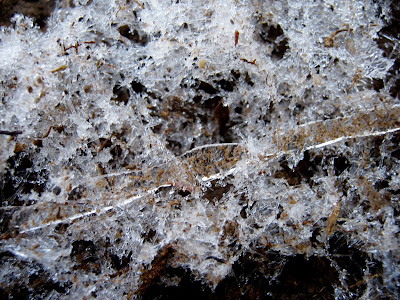Living in the high desert mountains of the South-West, I have the challenge of cold nights throughout the entire summer. To help my plants along in the spring I use many methods to capture the day's heat and provide a little extra warmth during the night. With frosts until the 25th of June, tender plants need to be covered nightly to prevent freezing.
Below are drawings of several of the methods I have used, some have worked well for me, others not at all. If you have beautiful, warm spring weather, there isn't any need to even read this post, but if you struggle with late frosts you may find this post helpful. My husband just couldn't believe that in Roosevelt (where we currently live) "you just plant a tomato in the ground and it grows without any covering". We didn't have to cover them nightly, and uncover each morning, for 2 months (June and July) and then again in mid August when the Fall Frosts hit like we have to do daily at the farm in Southern Utah.

Here is my experience using these methods.
Recycled Milk jugs or 2 liter pop bottles: cut the bottom out and save the lid. push the jug a couple of inches into the ground so the wind will not blow it over. Put the lid on in the evenings and remove by 10:00 a.m. to prevent cooking the plant. This method works fairly well if you do not have to leave them on for too long as the plants will get leggy. One problem I found when you took off the opaque jug after the weather had warmed sufficiently, the plant would become very easily stressed and often times would sunburn. I need the extra heat in the spring so the jugs are not removed during the day. If your springs are mild, simply cover the plant with the lidded jug in the evenings, and remove the entire jug during the day. Your plants will never be stressed by the sun.
Corrugated plastic sheeting or fiberglass: I have used this method several times with always the same result. The sheeting is tied into an arch with baling twine, set over the plants and the ends covered with a flake of hay stood on end for the night. I always lost my crops to frost using this method. I wonder if the addition of a blanket at night may have helped.
Glass bell cloches: These are expensive to buy so try using glass gallon jars if you can find them. Use a glass cutter to cut off the bottom. You must vent or remove this cover during the day to prevent cooking the plants. The glass intensifies the sun's rays.
Plastic storage bins: These large bins (use the clear ones) can be purchased at your local discount store. Drill 10 or more holes in the bottom of the bin. This will allow the hot air to escape. Place up side down over your transplanted warm weather crops and place a large rock on top to prevent the wind from blowing them away. This method works really well. You must gradually expose the plants to direct sunlight when the need for protection from frost has passed.
Wire cages covered with plastic: Place tomato plants in cages several weeks before your last frost. Cover the cage with plastic. Secure the top and sides closed with duct tape Poke a few holes in the top to allow the hot air to escape. I plant these side by side in large groups so the cages will help support each other. I also cover them with blankets when hard frosts are expected. As the season progresses I cut slits in the plastic as the plants grow. This allows them to harden off and receive more sunlight. Continue cutting away the plastic until it is no longer needed. Plants can also be covered easily when the fall frosts arrive. (At the farm that is August 28th)!

My preferred method for early spring protection of individual plants is using the large 5 gallon black pots trees come in. Check at your local nursery they often have these for sale. using a small circular saw cut off the bottom on the pot.
In the picture above I have covered cabbage plants. Cabbage can withstand early frosts so I do not cover the pots with a plastic bag at night. The boards have been placed over the top to help prevent the new transplants getting too much sun. Warm crops will be planted down the center of the rows later in the season.
The large plastic pipes (pictured at the left of photo) are planted with broccoli and Brussels sprouts. A glass window is placed over them to hold in the extra heat if needed.
Once the cole crops have a good start, the pots are and planted with tomatoes the first of June. A plastic bag is placed over them around 4:00 each evening. This traps in the heat and prevents the tomatoes from freezing. The large pipes are moved and filled with tender plants of peppers, eggplant, cucumbers etc. A large glass window is placed over the top. Simply slide open a corner to vent for the day and slide back over at night.
Cold Frames made from second hand glass doors are placed along the south fence for more heat absorption.
Use a thick mil green house plastic when building extra large cold frames. Using baling twine around the edge and stapling over the twine helped re-enforce the plastic edges from the wind.
For rows of warm weather crops this is the best method I have found!
Using Cattle Panels, folded in half length-wise and covered with plastic sheeting is used for starting cucumbers, beans, and other tender crops. 3 or 4 panels are laid end to end. A large sheet of plastic is laid over the panels and covered with dirt to hold down the edges. On one end gather the plastic in a way that will allow you to water the rows and also vent during the day. In late July or early August the plastic and panels are removed to allow the vines to spread out. I keep a large stash of old bed sheets near by in case of frost.
Here's a post from a few summers ago:
ice crystals--aren't they beautiful
Well, I think this picture just about describes how my week has been. Lots of covering and hoping the plants survive. I wish I had a better camera because they really are beautiful. The frost Wednesday morning took out several tomato plants from the cold-frame. Yes, this is typical weather for us. Just wait til I show you frost pictures in JULY and AUGUST!
Thursday morning (May 31) this is what I found out by the far west hydrant
yip, they are ICE- CICLES
So I put the boys to work making some more cold-frames.
Notice it is a 2 coat kind of day
but it did eventually warm up to a one coat day (extra coat is hanging on the fence)
Hope this gives you a few idea. If you have any others please let us know.
























